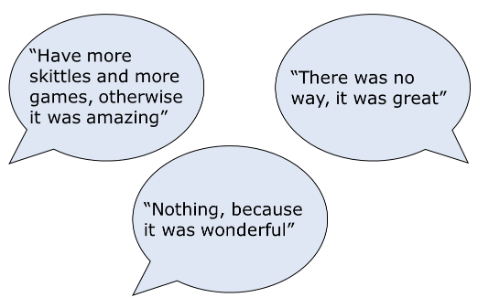2021 Evaluation
To evaluate the activities, we asked a set of matched questions before and after delivery of the activities. 14 pupils completed both sets of questions and this enabled us to match answers before and after the activities. First, we asked whether the pupils had enjoyed the activity out of max score of 5. The mean score was 4.4 (range of 3.5-5).
We asked the pupils to self-report on their knowledge of why and how immune cells communicate. We chose to have the pupils self-report as it was more important to us whether they felt like they had learnt about the topic than to test their specific knowledge gain. We learnt that 79% (11/14) reported an increase in knowledge of why immune cells communicate and 86% (12/14) said they learnt more about how immune cells communicate. We asked before the activities how much the pupils thought they would learn – 50% (7/14) thought they would gain a lot of knowledge. Our second questionnaire showed that in fact 79% (11/14) reported a gain of a lot of knowledge and all pupils reported some or a lot of knowledge gain.
50% (7/14) of the pupils stated that the ‘Spot the infected cell’ was their favourite activity, and the second most popular was the ‘Warning Signal’ activity (29%; 4/14).
When asked how we could improve the activities, the most common statement referred to having more time or more games to play (50%; 7/14). One pupil and the teacher commented that the engagement would have been better in person.
Other comments demonstrated that the pupils had enjoyed the engagement. In response to, how could we improve the activities:

We had ten worksheets that we could link the two pages of the Immune cell job advert together (not all pupils had added their names to both pages). Eight of these had a ‘lot of virus’ and these pupils should have added warning signals and a communication cell to tell specialised immune cells about the virus. Seven (88%) clearly had drawn separate warning signals and cells suggesting that most pupils had understood the material. Of these eight, the virus and the immune cell should have been matched and this was the case for seven (88%) with two pupils matching by pattern, four by colour and one by colour and patten. Of the two pupils who picked a ‘little virus’, both correctly drew just warning signals and their ‘be prepared’ immune cell clearly resembled the equivalent soft toy used in the matching game. Therefore, of the pupils’ drawing we could assess, 90% (9/10) correctly completed their worksheets.
We also took notes during the online meeting on how well the pupils interacted with us and the activities. Across the three days, it was clear that the pupils enjoyed the activities – for example, pupils moved around the class to see the diffusion of the dye from other pupils’ skittles, many hands were raised to be picked to take part in ‘Spot the Infected Cell’ and they were keen to show off their ability to match viruses and immune cells in the ‘Match the Immune Response’ activity.
One the second and third day, we asked for volunteers to report what they had learnt on the previous days; each day, three pupils provided accurate summaries of the key points. The pupils (3-5 each time) were also happy to answer specific questions we asked during the presentation and some (2-3 each day) asked questions of us.
The teacher used a tablet to ‘walk’ us around the classroom to observe the pupils while they completed their ‘immune cell job applications’. They were consistently able to describe the right type of response for their virus and described how they had matched the virus and the immune response through colours, patterns, or design.

